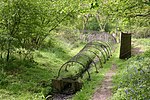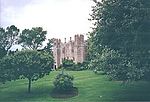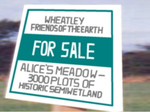Whitecross Green and Oriel Woods
Berkshire, Buckinghamshire and Oxfordshire Wildlife TrustSites of Special Scientific Interest in Oxfordshire

Whitecross Green and Oriel Woods is a 63-hectare (160-acre) biological Site of Special Scientific Interest between Oxford and Bicester in Oxfordshire. It is owned and managed by the Berkshire, Buckinghamshire and Oxfordshire Wildlife Trust under the name Whitecross Green Wood.These ancient woods are part of two former royal forests, Shotover and Bernwood. They are crossed by herb-rich and grassy rides, some of which are bordered by ditches, and there is also a pond and a marsh. Twenty-four species of butterfly have been recorded including the nationally rare black hairstreak.
Excerpt from the Wikipedia article Whitecross Green and Oriel Woods (License: CC BY-SA 3.0, Authors, Images).Whitecross Green and Oriel Woods
M40, Cherwell District Boarstall
Geographical coordinates (GPS) Address Website Nearby Places Show on map
Geographical coordinates (GPS)
| Latitude | Longitude |
|---|---|
| N 51.825 ° | E -1.128 ° |
Address
Whitecross Green Wood Nature Reserve
M40
OX5 2RJ Cherwell District, Boarstall
England, United Kingdom
Open on Google Maps










